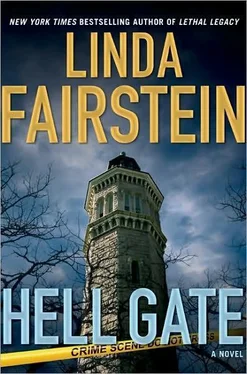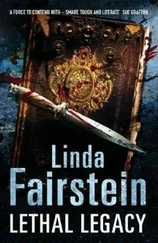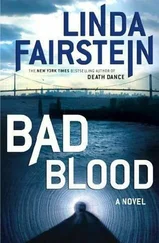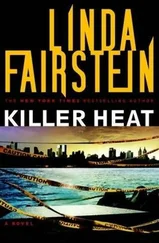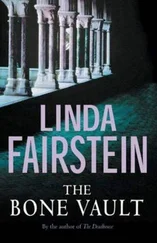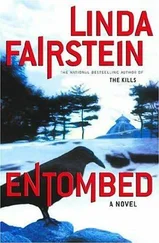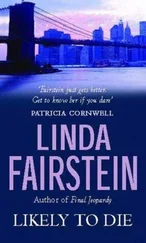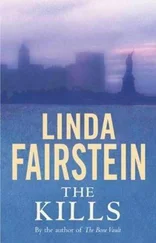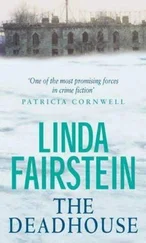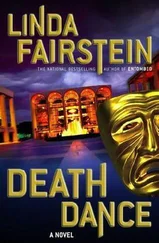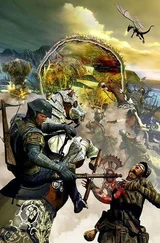“This isn’t about Alex or the district attorney, Vin. I want a handful of my men operating out of the mansion. Are you saying no to that?”
“This woman will turn up soon enough. Thank you, Ms. Cooper. Why don’t the rest of you step out while the commissioner and I finish this conversation?”
“Thanks for your hospitality, Mr. Mayor,” Mike said, pulling back my chair as the three of us accepted the abrupt end to the meeting. “Till next time.”
We were leaving as many of the City Hall employees were coming in through the metal detectors in the lobby of the building.
“Pittsburgh Paint. Bohemian blue,” Mike said.
“What?”
“In case you wanted to know the color of the paint on the wall. It’s historic, Coop.”
“I didn’t give it any thought.”
“It used to be green. Back in the day, I mean. But it had to be made more telegenic, so now it’s Bohemian blue,” Mike said. “I’ve spent so much time in that room waiting for press conferences on homicide cases, I can tell you every detail of the décor. It was a real pleasure to be in and evicted so fast today.”
“Well, I’ll go on up to my office and get to work organizing my unit for our interviews. Hizzoner was a bit testy with Scully, don’t you think?”
“Guess it’s his mansion whether he’s there or not,” Mike said.
“Will you be at your desk all day?” Mercer asked.
“I expect to.”
I walked out the front door and was buffeted by the fierce wind.
“Hold on to that railing,” Mercer said. “The steps look icy.”
There had been a light dusting of snow during the night that covered over patches of ice from the most recent storm.
“I was stupid not to wear boots today. I was running late and just hopped in a cab.”
There was construction on the east side of City Hall Park between the front steps and Centre Street, the wide thoroughfare that started right there, at the foot of the Brooklyn Bridge. One of the guards asked us to stay on the walkway that led toward Chambers Street, behind the building in the direction of my office.
“I’ll peel off here,” Mike said. “I’m back at the morgue for the autopsies of more of the bodies from the ship. You good?”
“My car’s up by the courthouse,” Mercer said. “I need to spend some time with Alex.”
“Talk later.” Mike waved good-bye to us and turned south to exit the park.
The badly rutted concrete path hugged the side of City Hall, then wound through the northeast corner of the park under the brittle arms of the bare trees that dotted the landscape. Tall mesh fences stood to the right, protecting dark green tarps that were spread over large sections of the ground.
“You missed the commissioner’s news, Alex,” Mercer said.
“What?” I asked, turning my head to better hear him. We were walking single file on the narrow strip of pavement.
“Careful,” he said, as he watched me balance on the slippery surface. “Two more bodies came ashore this morning. A couple of miles farther out in Nassau County.”
“Oh my God. Do you know anything about them?”
“Both young men. Both seem to have drowned.”
“How many people from the ship are still unaccounted for?” I asked.
“What’s that?”
“Doesn’t anyone have a manifest for the damn thing?”
“It’s a slave ship, Alex. When we find our Simon Legree, I expect we’ll find the documentation too.”
There was definitely black ice underfoot on the unshoveled walk. I paused and grabbed on to the mesh fence so that I could take Mercer’s arm when he caught up with me.
As I swiveled to face him, my shoulder hit the mesh and ripped the two stakes closest to me out of the ground. I fell onto my side, taking the fence with me as I landed on the tarp. I heard it rip open as my back slammed against the ground through the hole I had made in the old, weather-beaten material. My bag flew from my shoulder and emptied onto the dirt around me.
“Alex!” Mercer shouted as he bent over to reach for me. “Are you okay?”
My neck ached and the cold, damp earth was caked against both my legs and head. I was in a ditch, flat on my back.
“Shaken, Mercer. Not stirred. And I don’t think anything’s broken. Just badly shaken. If you want to talk omens, I think I’m on a killer course.”
“What is it, girl?”
My head rested on a pile of dirt and I was staring at the jawbone of a human skull.
“What do you mean it’s been here a couple of hundred years?” I asked, standing a few feet back from the large hole in the ground. “Where’d you get that idea?”
Nan Toth had gone to my office and retrieved the gym clothes and sneakers I kept there for the occasional times we were able to get away at lunchtime to work out. The officers had let me back into the restroom at City Hall to change clothes, and I had thrown out the black pencil skirt that had been torn almost in half along a sharp rock, just like my pantyhose.
Alton Brady, the park supervisor, was on his knees next to Mercer, while his men had already started the task of reinforcing the structure surrounding the twenty-foot-square site where someone had been digging.
“It’s the anthropologists says how old the stuff is,” Brady said. “Besides, you wasn’t supposed to be in here, miss.”
“Nothing I planned. I can promise you that.”
“What’s that museum in Washington? The Smithsonian?” Brady asked. “That’s where they’re sending the bones. Supposed to be all hush-hush.”
Mercer stepped down into the ditch. The ancient roots of rotting trees dangled on the edges, and protruding from the dirt were pieces of bone that looked like fragments of skulls and other skeletal remains.
“Is this part of the African Burial Ground?” Nan asked.
Mercer knew the answer to that. “No, that’s two blocks north of here. I wasn’t even a detective yet when we handled those protests.”
Digging to build a parking garage for an office complex on Lower Broadway in 1991, construction workers unearthed the remains of almost five hundred bodies.
“Who protested?” Nan asked.
Mercer scratched at the soil just six inches below the street level and the remains of a human hand-long, thin ivory fingers-stretched out toward his own.
“My people,” Mercer said, winking at Nan. “Bones and bureaucrats don’t mix too well, as you may already know. Politicians don’t like to remind folks that their cities were built on the backs of the disenfranchised. African American New Yorkers-those who didn’t already know it-learned that outside of Charleston, South Carolina, we had the greatest slave population in the colonies. So the city fathers weren’t any too anxious to deal with the remains.”
Alton Brady reached out to pick up a fragment of bone.
“Don’t touch that, please,” Mercer said, as he flipped open his phone and hit a number. “Mike? You at the morgue yet? We’re still in City Hall Park-I’ll explain later. Well, as soon as you’re done with breakfast, tell the ME to send his bone doc down here to the park, behind the building. I’ll meet him at the gate. Alex stumbled onto something.”
The ME’s office had a forensic anthropologist, Andy Dorfman, who helped in the difficult analysis of old skeletal discoveries.
“Look here, Wallace,” Brady said. “This is my property. We’re getting this done without your help, okay?”
“Why don’t you think it’s connected to the African Burial Ground?” I asked.
“Not a chance,” Mercer said. “I’d like to claim credit for knowing this, but you understand I got all the history from Mike.”
“That figures. How is it different?”
“African slaves were brought here to New Amsterdam in 1626. But they weren’t allowed to be buried in any of the church cemeteries within the city proper. And in those days, when Manhattan started at the Battery and covered only the southern tip of this island,” Mercer said, “the northernmost part of the city ended right over there, a block away. There were palisades built-fences with stakes on top-to defend the settlers. The slaves were given five desolate acres north of that, outside the original city, to bury their dead.”
Читать дальше
